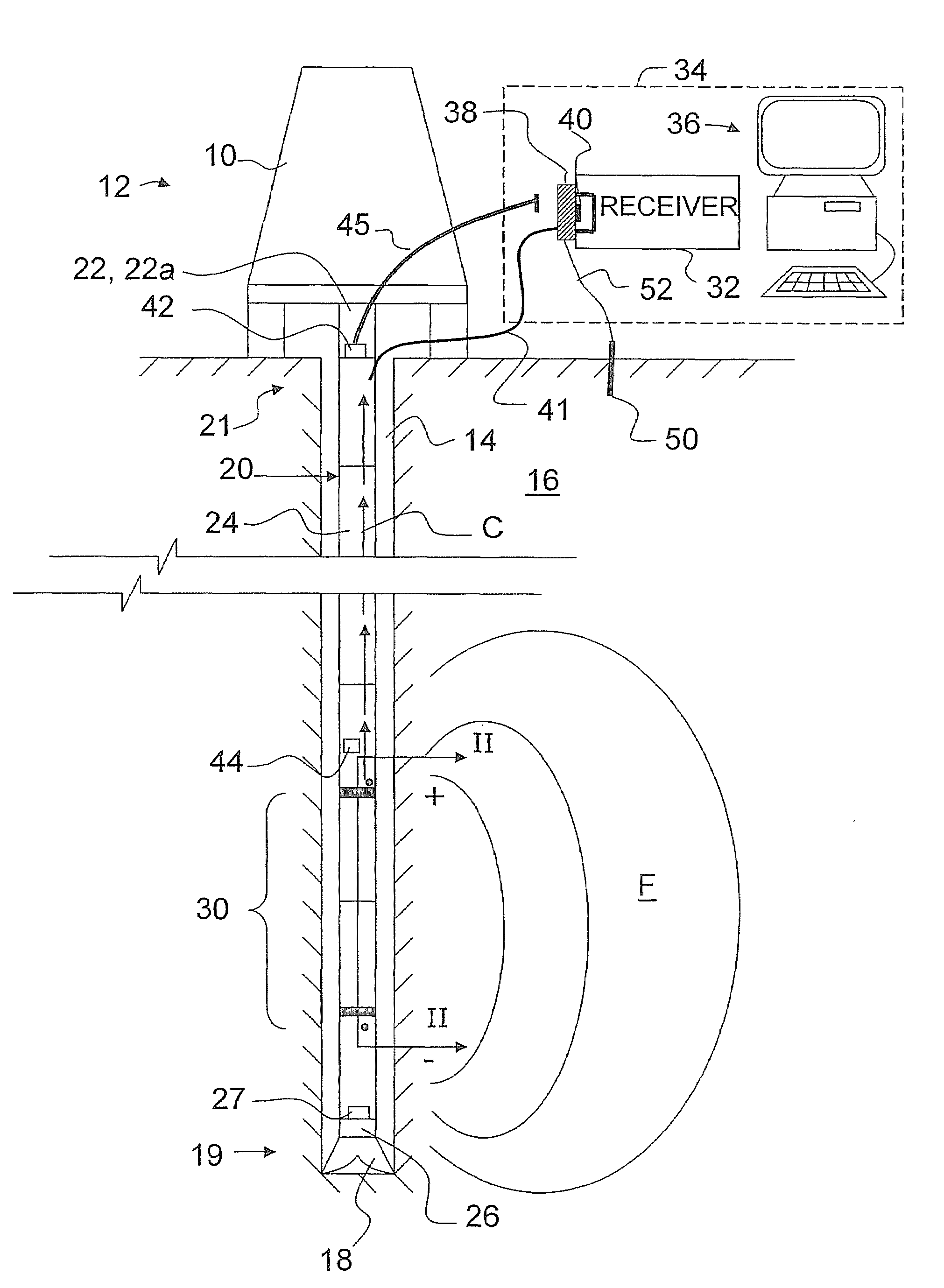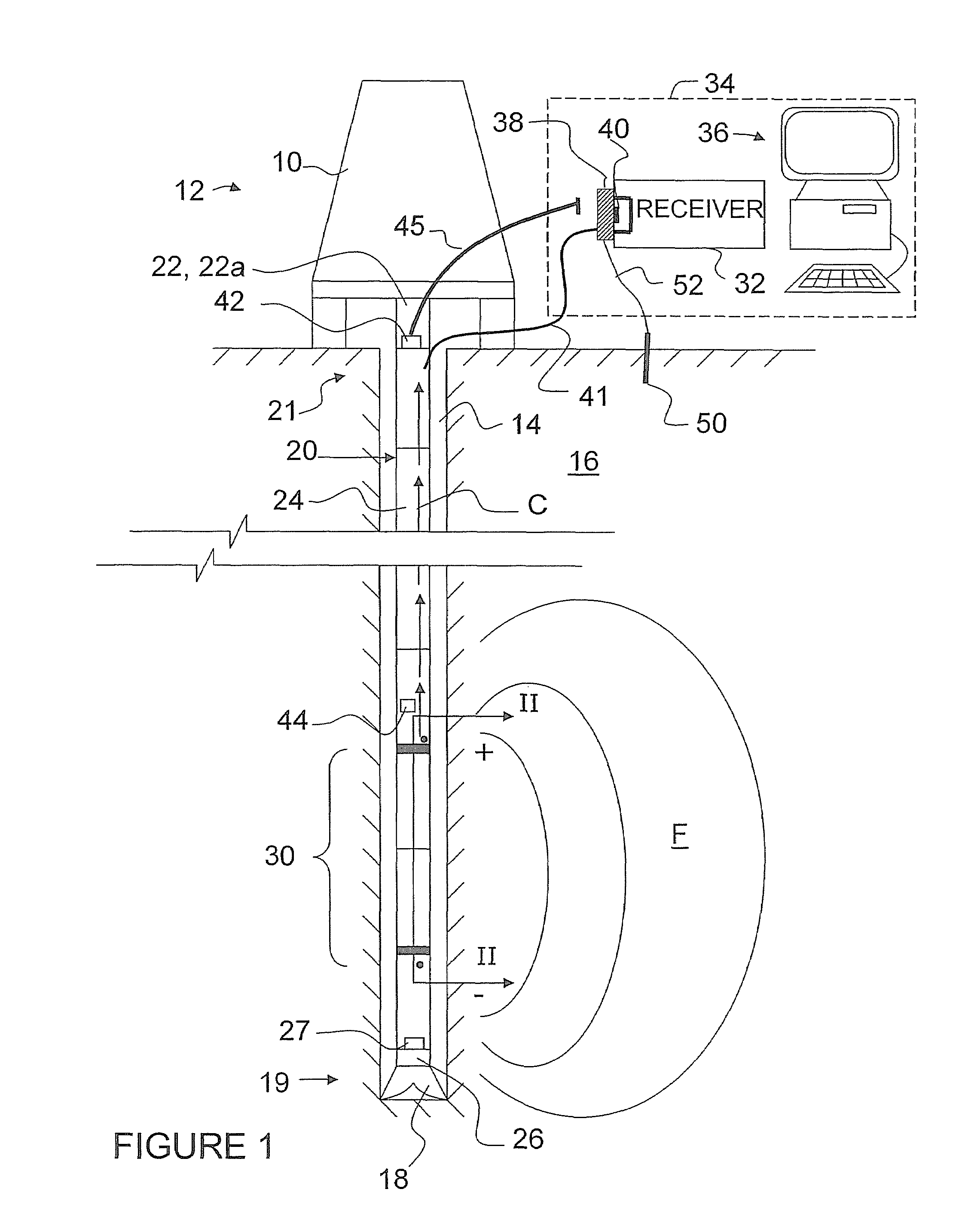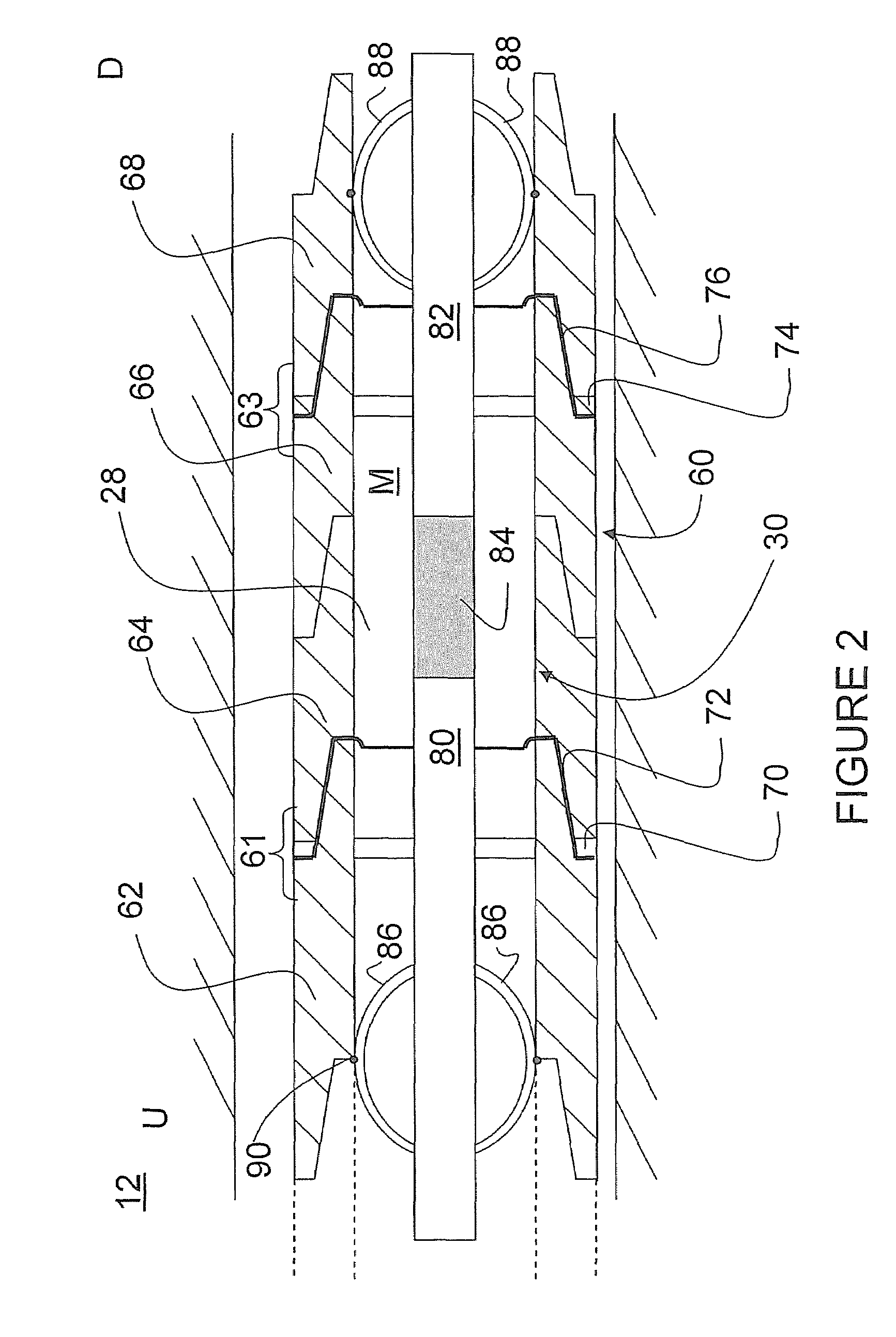System and method for downhole telemetry
a technology of telemetry and downhole, applied in the field of system and method for downhole telemetry, can solve the problems of tripping a drill string, requiring the removal of the drill assembly, and affecting the etc., and achieves the effect of relatively slow actual rate of data transmission
- Summary
- Abstract
- Description
- Claims
- Application Information
AI Technical Summary
Benefits of technology
Problems solved by technology
Method used
Image
Examples
Embodiment Construction
Drilling Environment
[0045]Referring therefore to FIG. 1, a drilling rig 10 is shown in situ at a drilling site 12. The rig 10 drills a wellbore 14 into an earth formation 16. The wellbore 14 is excavated by operating a drill bit 18 disposed at a lower end 19 of a drill string 20. The drill string 20 is supported at an upper end 21 by drilling equipment 22. As the bit 18 drills into the formation 16, individual drill rods 24, hereinafter referred to as “subs”, are added to the drill string 20 as required. In the example shown in FIG. 1, the drill bit 18 is driven by a fluid motor 26. The fluid motor 26 is powered by the drilling equipment 22 pumping drill fluid, hereinafter referred to as “mud”, using, a mud motor 22a through a hollow conduit 28 (see FIG. 2) defined by interior portions of the connected subs 24. The column of fluid held in the conduit 28 will hereinafter be referred to as a “mud column” and generally denoted by the character “M”.
[0046]An MWD tool 30 is located within...
PUM
 Login to View More
Login to View More Abstract
Description
Claims
Application Information
 Login to View More
Login to View More - R&D
- Intellectual Property
- Life Sciences
- Materials
- Tech Scout
- Unparalleled Data Quality
- Higher Quality Content
- 60% Fewer Hallucinations
Browse by: Latest US Patents, China's latest patents, Technical Efficacy Thesaurus, Application Domain, Technology Topic, Popular Technical Reports.
© 2025 PatSnap. All rights reserved.Legal|Privacy policy|Modern Slavery Act Transparency Statement|Sitemap|About US| Contact US: help@patsnap.com



